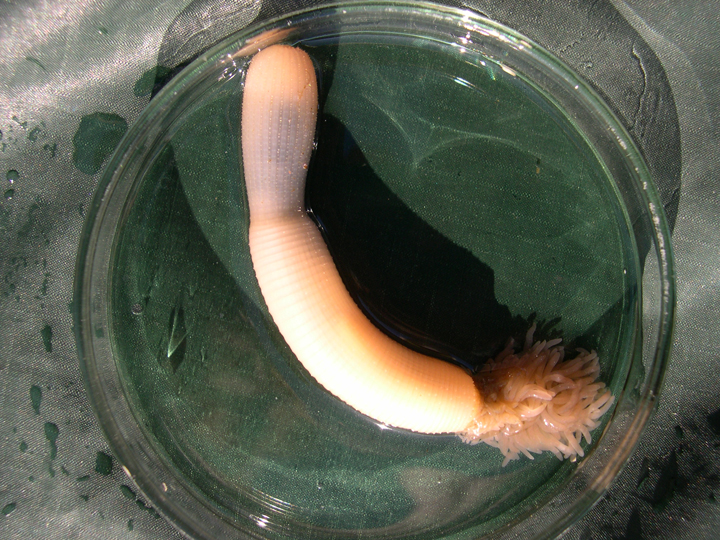TORONTO – When you first hear the name “penis worm,” you probably chuckle. But this ancient creature with an unfortunate name had a lot of bite: as in a whole throat of teeth.

This gruesome creature, belonging to the priapulid phylum, is incredibly unique: it has the ability to turn its mouth inside out. And it didn’t just use its cheese-grater-like teeth to chomp down on its prey — it could use them like grappling hooks to drag itself around.
READ MORE: Creepy sea creature found on California coast
Now scientists are acting like post-mortem dentists, identifying various types of teeth of these Cambrian-era creatures that roamed Earth about 500 million years go, specifically the Ottoia worm of the priapulid. The goal is to use the different types of teeth to identify previously-unrecognized penis worms from around the globe (you knew there couldn’t just be one).
The Cambrian Period was a time when when most animals were soft-bodied, which means that there is little fossil record except in rare places where remains could be preserved. This makes it difficult to get an accurate picture of the distribution of species. Though teeth remain, in the case of the Ottoia, they weren’t always identified as teeth: the researchers believe that they may have been misidentified as algal spores.
But with this new study, scientists will be able to use the new identification to properly identify the teeth when they are found, rather than assuming they are something else. The researchers hope that this will allow them to get a better picture of where penis worms were distributed around the world.
And penis worms still exist today, by the way.
“Modern penis worms have been pushed to the margins of life, generally living in extreme underwater environments,” said Dr. Martin Smith, a postdoctoral researcher in the University of Cambridge’s Department of Earth Sciences and the study’s lead author. “But during the Cambrian, they were fearsome beasts, and extremely successful ones at that.”
The study appears in the journal Paleontology.




Comments